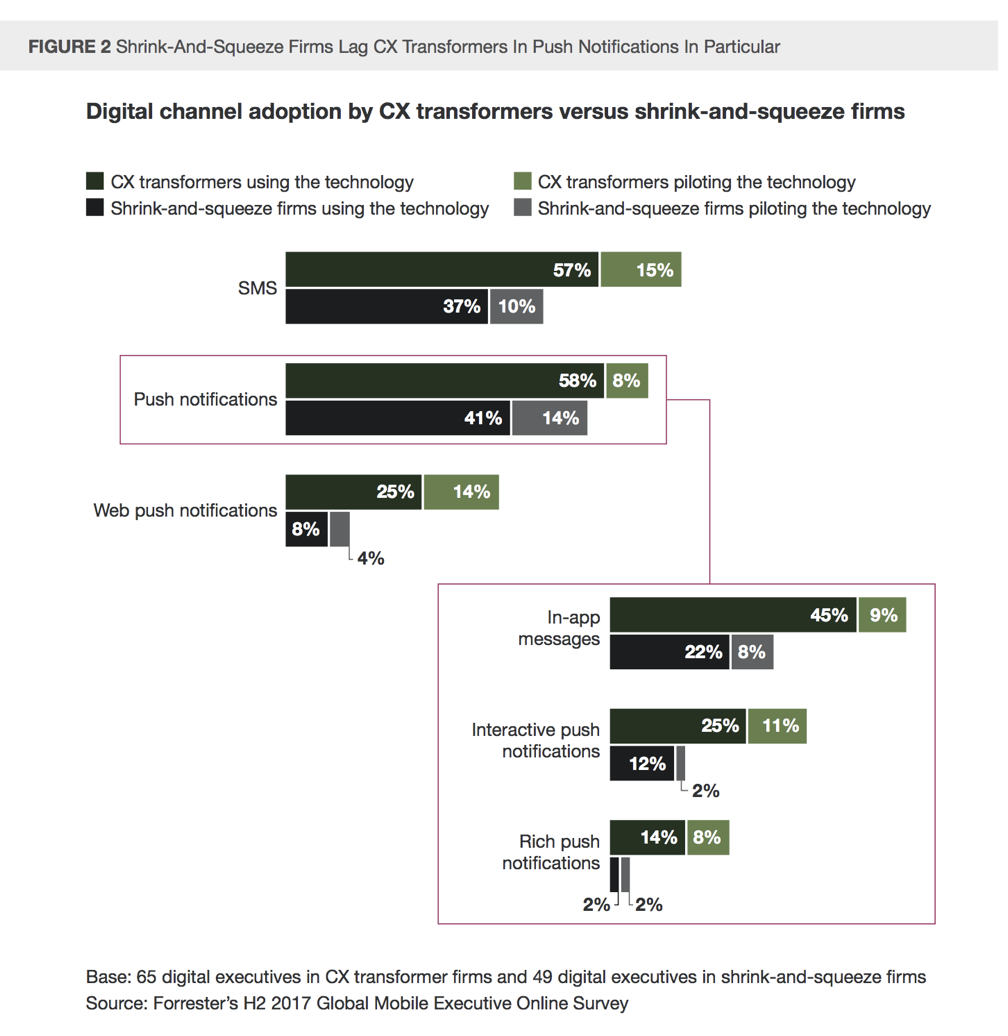
CX Transformers: More than Meets the Eye

Share to my network
In this article
Categories
Book a meeting
Connect with our team of experts to discuss your conversion and loyalty goals, and how we can help you achieve them faster.
Get a demoGet our take on Forrester’s August 2018 report, “Consumers Are Connected; Your Company Isn’t” (complimentary copy available until 11/21/18) in this post.
The number of devices, channels, apps, services, media, ways to pay for stuff, etc. is growing. It’s always going to grow. You have engage customers where they already are and serve up right-sized experiences proactively based on their real-time context if you want to be a Customer Experience (CX) transformer. So says the authors of the Forrester report “Consumers Are Connected; Your Company Isn’t” — this is our take on that report.
No firm should offer all services on all devices, platforms, and channels. Most, however, fall short on engaging their customers where they already are and keeping pace with consumer expectations. But the easy way to spot a CX transformer in the market (they don’t morph into fighting robots, darn it), is that they’re employing mobile to transform customer experiences.
What’s the ROI on that? The majority of CX transformers see positive financial returns from mobile and emerging technologies while only 16% of shrink-and-squeeze firms do.
The largest difference between CX transformers and shrink-and-squeeze firms is in their use of notifications.

To that end, what follows are my takeaways of Consumers Are Connected; Your Company Isn’t, by Julie A. Ask and Mike Chirokas. I’ll also offer some thoughts on how CX transformers stand out from their peers, and touch on some business and technical challenges ahead.
CX transformers are Squeezing Out Slow Mobile Movers
According to Forrester, CX transformers apply “in-app messaging, interactive push notifications, and rich push notifications” at a far greater rate than their counterparts. But compared to firms at different maturity levels, CX Transformers are: a) channel, device and experience agnostic and, b) adept at meeting mobile natives on their own terms.
By comparison, so-called shrink-and-squeeze firms (a third of Forrester’s sample), pursue brand consistency and “bolt on new channels, shrinking and squeezing experiences from the PC browser onto a smaller screen.” These leads to repetition across channels, not evolution in experience.
Mobile-first firms are closer to the mark. These firms “understand that new technologies offer new possibilities but are yet to implement them.” That may be because they’re in less demand-driven service industries, such as insurance or wealth management, or because budgets/staffing/strategy are simply inadequate to implementing and optimizing transformative techs. And beginning with limited potential is not a good way to transform customer experiences.
What CX Transformers are Doing Right
Simply put, CX transformers understand the full potential of mobile to transform experiences. “They use emerging devices, platforms, and channels to enhance customer experiences . . . They make smart choices to meet customers where they are — and are rewarded as a result.”
Examples of CX transformation done right:
- Airlines and hotels with mobile check-in, boarding passes or room keys;
- Quick-service restaurants with “order on mobile, pick up in-store” services;
- Brands using emerging techs to create new business models (e.g. MetroMile, Proteus, Volvo, John Hancock)
Who’s a CX Transformer?
What follows are snippets from a few case studies referenced by the authors of Consumers Are Connected; Your Company Isn’t:
- USA Today uses rich push notifications to show stock charts alongside text. Using the push notification, the customer can choose to save, share, or see more new stories directly from her home screen. Rich push notifications have driven an 18% increase in app opens for USA Today.
- Virgin Trains sends SMS alerts to passengers 2 minutes before platform information appears on the board. This has improved customer satisfaction significantly. Lesson learned: messaging is critical to delivering great contextual experiences. Brands with a big data set, a high % of user opt-ins, and a knowledge of their messaging KPIs outperform those just getting started
- eXtra, a consumer electronics retailer in Saudi Arabia, uses web push notifications to connect with Android web visitors. Click through rate is about 12%, and web consumers are 4x as likely to return to the site as those that opt out of notifications.
CX Transformers Still Have Much to Learn
At this point, if you don’t support smartphones and tablets in addition to desktop, you’re not really in the game. But a CX transformer can’t stop there. “Firms have been slow to embrace smartwatches, voice assistant speakers, or virtual reality (VR) headsets … too many stop at smartphones and tablets when delivering digital experiences for their best customers — even though these will go out of their way to download apps for emerging devices.”
On the other side of the same coin, apps alone won’t do, either. “Progressive web apps and instant apps are an effective alternative to mobile apps for medium- and low-frequency users who just want to get something done and get out. However, 92% of firms aren’t using either of these channels, and about a third don’t even know about them yet.”
One more thing CX transformers need to get better at, according to the Forrester report, is sorting out how to build, buy or borrow engaging moments from others. “Digital business pros must borrow moments from third-party platforms like Amazon, Apple, Facebook, and Google to reach their customers and offer them convenience by inserting their services into existing task flows.”
Makes sense — if there’s a good thing happening, smart brands want to be there. But in this case, according to the authors, emerging market reality and current market response have a gap. “Few of even the CX transformers offer messaging (18%) or chat bots (9%) on third-party platforms.” Fewer still are creating voice experiences, and that’s surprising, considering Forrester’s prediction for smart speakers in 26 million households in the US alone by the end of 2018.
CX Transformers Will, Well, Transform
So, clearly there’s plenty of room for more CX transformers to emerge. Want to be among them? Get Forrester’s additional recommendations in the report — download your complimentary copy today.


